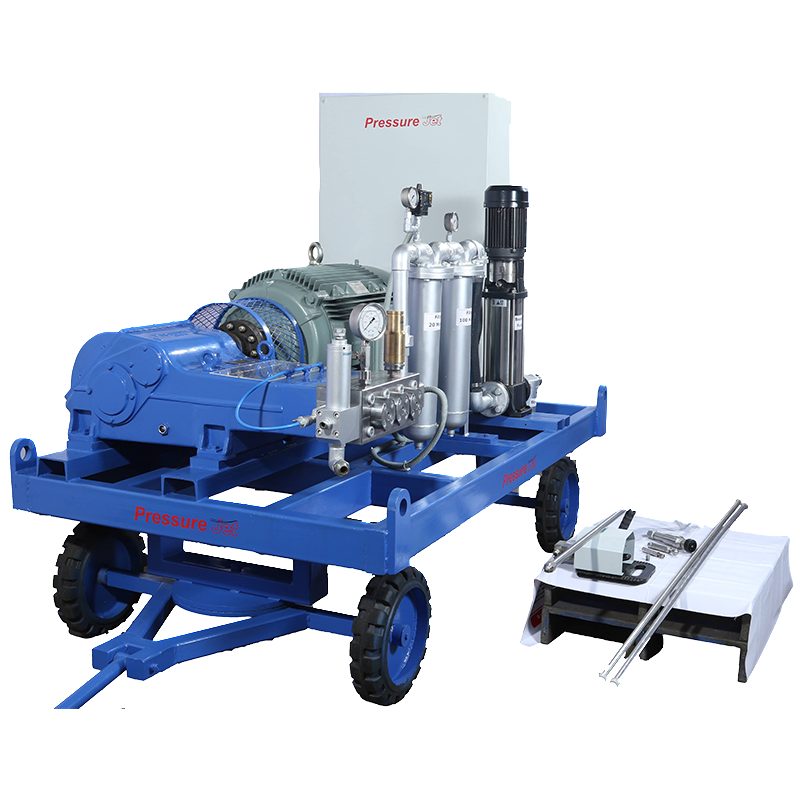In the dynamic landscape of industrial processes, the need for efficient and effective cleaning and maintenance solutions is paramount. One such solution that has gained prominence is industrial hydro jetting, a technique that utilizes high-pressure water jets to clean and unclog pipes, ensuring the smooth functioning of various systems. In this comprehensive guide, we will explore the nuances of industrial hydro jetting, from its fundamental principles to its diverse applications and the critical considerations that industries must bear in mind.
The Basics of Industrial Hydro Jetting
At its core, industrial hydro jetting involves the utilization of high-pressure water streams to dislodge and remove contaminants from pipelines and systems.
The process relies on specialized equipment, including high-pressure pumps, hoses, nozzles, and control systems, which work in tandem to deliver powerful and targeted water jets.
Equipment Used in Industrial Hydro Jetting
Understanding the intricacies of the equipment used in hydro jetting is essential for successful implementation. High-pressure pumps generate the force required, hoses transport the water, and specially designed nozzles control the direction and intensity of the water jets.
Advanced control systems allow operators to precisely tailor the cleaning process to the unique requirements of each system.
Applications of Industrial Hydro Jetting
The versatility of industrial hydro jetting makes it indispensable across various industries. From manufacturing plants and petrochemical facilities to wastewater treatment plants, hydro jetting finds applications in cleaning and maintaining pipelines, tanks, and other intricate systems.
Its adaptability makes it a go-to solution for a wide range of industrial challenges.
Advantages of Industrial Hydro Jetting
The benefits of industrial hydro jetting are multifaceted. Not only is it environmentally friendly due to the reduced need for chemicals, but it also proves to be cost-effective in comparison to traditional cleaning methods.
The efficiency of hydro jetting ensures a thorough cleaning process, reducing downtime and enhancing overall system performance.
Safety Measures in Industrial Hydro Jetting
Prioritizing safety is imperative in any industrial operation. Operators engaging in hydro jetting activities must adhere to stringent safety measures, including the use of appropriate personal protective equipment (PPE), rigorous training, and thorough hazard assessments.
These precautions ensure the well-being of personnel involved in the hydro jetting process.
Challenges and Considerations
While industrial hydro jetting is a highly effective cleaning method, it is not without its challenges. Sensitivity to certain materials, the need for skilled operators, and a comprehensive system assessment before implementation are crucial considerations.
Understanding and addressing these challenges contribute to the successful execution of hydro jetting operations.
Cost Considerations and Return on Investment
A critical aspect of any industrial process is the financial investment required. Industrial hydro jetting proves cost-effective in the long run, considering the potential return on investment through improved system efficiency, reduced maintenance costs, and minimized downtime.
Proper cost assessments help industries make informed decisions regarding the adoption of hydro jetting.
Environmental Impact of Industrial Hydro Jetting
Environmental responsibility is a growing concern for industries worldwide. Hydro jetting aligns with sustainable practices by minimizing the use of chemicals and reducing the environmental impact of cleaning processes.
Proper wastewater disposal practices further contribute to the eco-friendly nature of hydro jetting.
FAQs:
Q1: Is industrial hydro jetting suitable for all types of pipes and systems?
A: While versatile, the suitability of hydro jetting depends on the material and condition of the pipes. Consultation with experts is recommended to determine feasibility.
Q2: How often should industrial hydro jetting be performed?
A: The frequency varies based on industry, processes, and the condition of systems. Regular inspections and assessments help determine the optimal cleaning schedule.
Q3: Can hydro jetting replace traditional cleaning methods entirely?
A: In many cases, yes. Hydro jetting is often more efficient and environmentally friendly than traditional methods, but the decision should be based on individual circumstances.
Q4: What safety precautions should be taken during hydro jetting operations?
A: Operators should wear appropriate PPE, follow industry safety standards, and undergo thorough training. A hazard assessment should precede every hydro jetting operation to identify and mitigate potential risks.
Q5: Does industrial hydro jetting cause damage to pipes?
A: When performed correctly by skilled professionals, hydro jetting is unlikely to cause damage. However, it’s crucial to assess the material and condition of the pipes beforehand to avoid any unforeseen issues.
Q6: Can hydro jetting be used for preventive maintenance?
A: Yes, hydro jetting is highly effective for preventive maintenance, helping to remove buildups and prevent potential issues before they escalate. Regular scheduled cleaning can significantly extend the lifespan of systems.
Q7: What is the typical lifespan of hydro jetting equipment?
A: The lifespan varies depending on the quality of equipment, frequency of use, and maintenance practices. Regular inspections and timely replacements contribute to the longevity of hydro jetting equipment.
Conclusion:
As industries continue to evolve, the role of industrial hydro jetting becomes increasingly pivotal. Its efficiency, versatility, and environmentally friendly attributes position it as a cornerstone in the realm of industrial maintenance. By understanding the fundamentals, embracing safety measures, and considering the long-term benefits, industries can harness the power of industrial hydro jetting to ensure the reliability and efficiency of their processes. The journey towards cleaner and more sustainable industrial practices is paved with the transformative force of high-pressure water jets.

A group of home improvement enthusiasts and bathroom design experts, combines in-depth knowledge and a shared passion to deliver engaging, informative content that guides readers through the world of bathroom innovation and style.

Leave a Reply